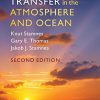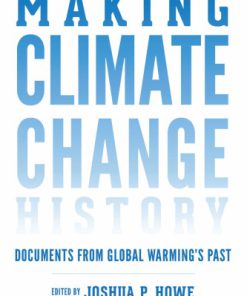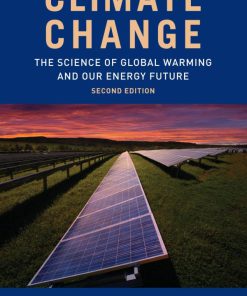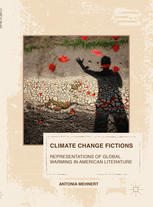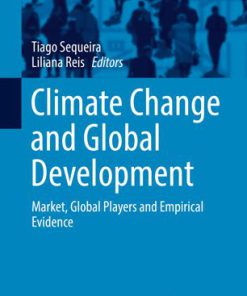Evidence-Based Climate Science. Data Opposing CO2 Emissions as the Primary Source of Global Warming 2nd Edition Don Easterbrook 0128045892 9780128045893
$50.00 Original price was: $50.00.$25.00Current price is: $25.00.
This completed downloadable of Evidence-Based Climate Science. Data Opposing CO2 Emissions as the Primary Source of Global Warming 2nd Edition Don Easterbrook

Instant downloaded Evidence-Based Climate Science. Data Opposing CO2 Emissions as the Primary Source of Global Warming 2nd Edition Don Easterbrook pdf docx epub after payment.
Product details:
- ISBN 10: 0128045892
- ISBN 13: 9780128045893
- Author: Don Easterbrook
Evidence-Based Climate Science: Data Opposing CO2 Emissions as the Primary Source of Global Warming, Second Edition, includes updated data related to the causes of global climate change from experts in meteorology, geology, atmospheric physics, solar physics, geophysics, climatology, and computer modeling. This book objectively gathers and analyzes scientific data concerning patterns of past climate changes, influences of changes in ocean temperatures, the effect of solar variation on global climate, and the effect of CO2 on global climate. This analysis is then presented as counter-evidence to the theory that CO2 is the primary cause behind global warming.
Table of contents:
Part I. Climatic Perspectives
Chapter 1. Climate Perspectives
1. Introduction
2. The “97%” Myth
3. The Scientific Method Versus Dogma
4. Comparison of Computer Modeling of Climate With Measured Temperatures
5. No Global Warming for 18 Years and 8 Months
6. Hottest-Year-Ever Claims
7. Data Corruption
8. The Past Is the Key to the Future
Part II. Temperature Measurements
Chapter 2. A Critical Look at Surface Temperature Records
1. Introduction
2. The Global Data Centers
3. The Golden Age of Surface Observation
4. Vanishing Stations
5. See for Yourself: The Data Are a Mess
6. Station Dropout Was Not Totally Random
7. Instrument Changes and Siting
8. Along Comes “Modernization”
9. Adjustments Not Made, or Made Badly
10. Heat From Population Growth and Land-Use Changes
11. U.S. Climate Data
12. U.S. State Heat Records Suggest Recent Decades Are Not the Warmest
13. Major Changes to USHCN in 2007
14. Hadley and NOAA
15. Final Adjustments: Homogenization
16. Problems With Sea Surface Temperature Measurements
17. Long-Term Trends
18. Summary
Chapter 3. Is the NASA Surface Temperature Record an Accurate Representation?
Chapter 4. In the Climate Debate, Hear Both Sides
1. Are Today’s Temperature Changes Unprecedented?
2. Was the Glacial-to-Interglacial Global Warming as Little as 3°C?
3. Was 2014 “The Warmest Year on Record”? and Does It Matter?
4. What Is the Ideal United Kingdom and Global Temperature?
5. Stretching the Vertical Axis of the Temperature Graph
6. Imagined Effects of Global Warming
7. Is Sea Ice Really Declining Rapidly?
8. Rising CO2 Concentration and Its Effect on Global Temperature
9. Are the Computer Models of Climate Reliable?
10. Has Climate Science Become Dishonest?
11. Are Floods and Droughts Worsening and Crops Failing as Predicted?
12. Conclusions
Chapter 5. Southeast Australian Maximum Temperature Trends, 1887–2013: An Evidence-Based Reappraisal
1. Introduction
2. Materials and Methods
3. Results and Discussion
4. Conclusions
Part III. Extreme Weather Events
Chapter 6. Weather Extremes
1. Introduction
2. Extreme Weather Events and the Earth’s Climate
3. Heat Extremes
4. Cold Extremes
5. Floods and Droughts
6. Tropical Cyclones and Tornadoes
7. Economic Losses Due to Extreme Weather
8. Human Fatalities and Heat and Cold Extremes
9. Summary and Conclusions
Part IV. Polar Ice
Chapter 7. Evidence That Antarctica Is Cooling, Not Warming
1. Introduction
2. Are Antarctic Glaciers Melting at an Accelerating Rate?
3. Is Antarctica Warming or Cooling?
4. Physical Data Show Lack of Antarctic Warming
5. Cooling of the Southern Ocean Around Antarctica
6. West Antarctic Ice Sheet
7. Conclusions
8. Evidence of Stability of the West Antarctic Ice Sheet
9. Credibility of the “Unstoppable Collapse of the West Antarctic Ice Sheet”
10. Isostatic Rebound
11. Conclusions
Chapter 8. Temperature Fluctuations in Greenland and the Arctic
1. Greenland
2. The Arctic
Part V. Carbon Dioxide
Chapter 9. Greenhouse Gases
1. Role of Water Vapor
2. Carbon Dioxide
3. Global Warming and CO2 During the Past Century
4. Geologic Evidence That Global Warming Causes Increased Atmospheric CO2—CO2 Does Not Cause Global Warming
5. CO2 Lags Warming Over Short Time Spans
Chapter 10. Is CO2 Mitigation Cost Effective?
1. Introduction
2. Projected 21st-Century CO2-Driven Warming
3. Method
4. Other Greenhouse Gases
5. The Intertemporal Discount Rate
6. Welfare Loss From Inaction
7. The Cost–Benefit Ratio
8. Illustrative Case Studies
9. Results
10. Discussion
11. Conclusions
Part VI. Oceans
Chapter 11. Relationship of Multidecadal Global Temperatures to Multidecadal Oceanic Oscillations
1. Introduction
2. The Southern Oscillation Index
3. Multivariate ENSO Index
4. The Pacific Decadal Oscillation
5. Frequency and Strength of ENSO and the PDO
6. Correlation of the PDO and Glacial Fluctuations in the Pacific Northwest
7. ENSO Versus Temperatures
8. The Atlantic Multidecadal Oscillation (AMO)
9. The North Atlantic Oscillation, Arctic Oscillation, and the AMO
10. Synchronized Dance of the Teleconnections
11. Using Warm and Cold Pools in Operational Seasonal Forecasting
12. Short-Term Warm/Cool Cycles From the Greenland Ice Core
13. Where Are We Headed During the Coming Century?
Chapter 12. Sea Level Changes as Observed in Nature
1. Introduction
2. “Poster Sites” for Lobbyists
3. Test Areas of Eustatic Changes in Sea Level
4. Satellite Altimetry Before “Corrections”
5. Discussion
6. Conclusions
Chapter 13. Ocean “Acidification” Alarmism in Perspective
1. Introduction
2. The Historical Record of CO2 and Temperature in the Atmosphere
3. The Adaptation of Species to Changing Environmental Conditions
4. The Buffering Capacity of Seawater
5. The Ability of Calcifying Species to Control the Biochemistry at the Site of Calcification
6. A Warmer Ocean May Emit CO2 Back Into the Atmosphere
7. Summary of Experimental Results on Effect of Reduced pH on Calcifying Species
8. Conclusions
Part VII. Solar Influences on Climate
Chapter 14. Cause of Global Climate Changes: Correlation of Global Temperature, Sunspots, Solar Irradiance, Cosmic Rays, and Radiocarbon and Berylium Production Rates
1. Solar Variation—Grand Minima
2. Radiocarbon (14C6) Production Rates
3. Berylium-10 (10Be4) Production Rates
4. Cosmic Ray Incidence and Climate
5. Conclusions
Chapter 15. Solar Changes and the Climate
1. Introduction
2. The Earth–Sun Connection
3. Warming Due to Ultraviolet Effects Through Ozone Chemistry
4. The “Pause” and Climate Projections
5. Summary
Chapter 16. The Sun’s Role in Climate
1. Introduction
2. Solar Activity Changes Over the Last 10,000 Years
3. Medieval Warm Period
4. Is Something Missing in the Climate Models?
5. Solar-Forced Millennial Climate Cycles
6. Coverage of Millennial Climate Cycles in the Fifth IPCC Climate Report
7. Conclusions
Chapter 17. The New Little Ice Age Has Started
1. Introduction
2. Milankovitch Cycles and Interrelated Variations in Climate and Abundance of Carbon Dioxide in the Atmosphere
3. Interrelated Variations in the Climate, Total Solar Irradiance, and Solar Activity
4. Quasi-bicentennial Variations in Total Solar Irradiance and Mechanisms of Its Secondary Additional Influences
5. The Quasi-bicentennial Solar Cycle Determines Variations in Both the Duration and the Power of the 11-Year Solar Cycle
6. The Average Annual Energy Balance of the Earth
7. Quasi-bicentennial Variation in the Total Solar Irradiance Leads to an Energy Imbalance of the Surface–Atmosphere System
8. Current Total Solar Irradiance Decrease in the Quasi-bicentennial Cycle Has Led to a Long-Term Deficit in the Earth’s Energy Balance and the Beginning of a New Little Ice Age
9. Sensitivity of Climate to Water Vapor and Carbon Dioxide
10. Convection, Evaporation, and Condensation in Transfer of Thermal Flow at the Earth’s Surface
11. Powerful Volcanic Eruptions Lead Only to Short-Term Cooling Periods
12. Future Deep Cooling Can Become a Major Problem for the Development of Petroleum in the Arctic
13. Increasing Global Temperature on the Earth Has Stopped Since 1997
14. Conclusion
Chapter 18. Aspects of Solar Variability and Climate Response
1. Solar Activity in the Little Ice Age and Modern Warm Period
Chapter 19. The Notch-Delay Solar Hypothesis
1. Introduction
2. The Notch in the Empirical Transfer Function
3. The Delay
4. The Force-X Hypothesis
5. The Force-ND Hypothesis
6. Mechanisms
7. A Prediction
8. The Notch-Delay Solar Model
9. Conclusions
Appendix A: Acronyms
Part VIII. Climate Models
Chapter 20. Correcting Problems With the Conventional Basic Calculation of Climate Sensitivity
1. Introduction
2. The Conventional Calculation of Climate Sensitivity
3. Problems With the Conventional Basic Climate Model
4. Proposed Feedback: “Rerouting”
5. Externally Driven Albedo Could Be Significant
6. Alternative Model
7. The “Hotspot”
8. Calculating the ECS Using the Alternative Model
9. Conclusions
Appendix: Acronyms
Part IX. Climate Predictions
Chapter 21. Using Patterns of Recurring Climate Cycles to Predict Future Climate Changes
1. Introduction
2. The Past is the Key to the Future: Lessons From Past Global Climate Changes
3. Significance of Past Global Climate Changes
4. Correlation of Temperature Cycles and the Pacific Decadal Oscillation
5. The Atlantic Multidecadal Oscillation
6. Where Is Climate Headed During the Coming Century?
People also search:
climate change about global warming
climate change about the ocean
climate change about animals
climate change about water
climate change about polar bears
You may also like…
Politics & Philosophy - Government & Politics
Making Climate Change History Documents from Global Warming s Past Joshua P Howe
Uncategorized
Politics & Philosophy - Social Sciences
Poetry - American Poetry
The New Poetics of Climate Change Modernist Aesthetics for a Warming World Matthew Griffiths
Politics & Philosophy - Social Sciences
Climate Change The Science of Global Warming and Our Energy Future Edmond A. Mathez
Uncategorized
Climate Change and Global Development Market Global Players and Empirical Evidence Tiago Sequeira


